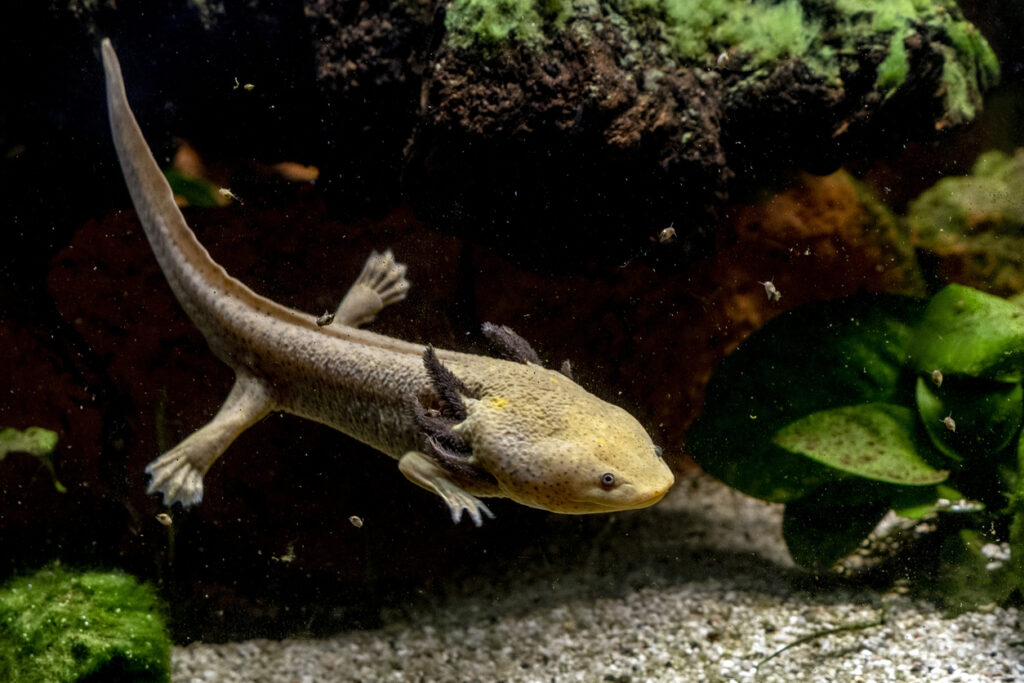Many animals throughout the world have developed incredible adaptations in order to survive in their environment. Some species even have the ability to regenerate entire limbs, should they become injured or detached. In this blog, we’ll explore what regeneration is, the difference between repair and regeneration, and which animals have the ability to regenerate limbs.
What is regeneration in animals?
Regeneration is the remarkable ability of animals to replace or restore damaged or lost body parts. Unlike repair, which involves fixing a damaged body part, regeneration aims for complete replacement without scar tissue. At the core of this process are stem cells, which play a pivotal role in rebuilding tissues and organs.
Repair vs. regeneration
Repair involves the restoration of a diseased or damaged body part, often resulting in scar tissue formation. On the other hand, regeneration goes beyond repair by completely replacing lost tissue or organs, aiming for functional restoration without scarring. Stem cells are crucial in regeneration, as they have the remarkable potential to develop into various types of cells and tissues.
Can all animals regenerate limbs?
While regeneration is a remarkable phenomenon, not all animals possess this ability. However, some species have evolved the capability to regrow lost limbs to varying degrees. It’s worth noting that regenerative ability often declines with age, and not all body parts are equally regenerable across species.
Examples of animals that can regenerate:
There are a number of animals that can perform this incredible feat, from reptiles and crustaceans to sharks! Let’s have a look at just a few of these.
Axolotl: This aquatic salamander is renowned for its exceptional regenerative abilities. Not only can axolotls regenerate limbs, but they also have the ability to regenerate organs, including the heart, and even its spinal cord. When an axolotl experiences an injury to its limb, its body can begin the process within hours. A younger axolotl can regenerate a limb in around 40-50 days, although this increases as the individual gets older.

Lobster: Lobsters employ a fascinating survival strategy known as “reflex amputation.” In dangerous situations, they can discard a limb, which can be lifesaving. Moreover, lobsters have the ability to regenerate some of their body parts, including claws, walking legs, and antennae.
Starfish and Brittle Stars: Starfish and their relatives, brittle stars, are renowned for their regenerative prowess. They can not only grow new limbs but also regenerate an entirely new body from a single arm. While this might take up to a year to complete, it’s still an astonishing demonstration of nature’s resilience.
Mexican Tetra: Also known as the blind cave fish, this species has the ability to regenerate its heart tissue after injury, with no scar tissue. This is a skill also acquired by the zebrafish, which belongs to the minnow family.
Sharks: While sharks can’t regrow a tail or fin, they have another fascinating skill when it comes to regrowth. Sharks will regenerate an endless supply of teeth throughout its life, ideal for hunting and feeding. They have a conveyor belt of teeth ready and waiting, so when they lose a teeth, a new one will appear – sometimes within an hour!
Regeneration in animals demonstrates nature’s adaptability and resilience. From axolotls to starfish, various creatures have evolved incredible abilities to regenerate lost limbs and tissues.
Why not visit Deep Sea World aquarium to see some of these amazing creatures for yourself and learn more about the world’s marine species. Purchase your tickets today and explore the fascinating world of marine life at Deep Sea World.
